| Umělec 2001/1 >> Heavy Metal | Просмотр всех номеров | ||||||||||||
|
|||||||||||||
Heavy MetalUmělec 2001/101.01.2001 Tomáš Pospiszyl | focus | en cs |
|||||||||||||
|
"Skulls, tons of skulls. Black, night and horror. A grave. Satan and death, terrifying noise, an end to all hope, demons and madness. All standard fare in heavy metal music, along with skeletons, blood, doomed civilizations, vomit, black magic, war, blasphemy, booze, freakish animals, pierced eyes, cemeteries, fetuses, Armageddon, violence, underground crypts stacked with corpses, the nation, church orgies, pain and, last but not least, suicide.
Metal is a style of music and life that has survived longer than many other genres. It is also far more extreme and complex than other life-styles young people become immersed in. Metal can even be as dangerous as it is childish and ridiculous. It could seem that heavy metal was just a short-lived fad. Like other products of mass culture we can trace in it an affinity to general cultural history. Metal, and the whole complex of its external manifestations, is closely tied to, among other things, romanticism, symbolism and neo-gothicism, and could be interpreted both as a final offshoot and a natural continuation of their general tendencies. The much-clamored end of heavy metal seems, from this perspective, as absurd as saying that realism is dead. Heavy metal as an extreme offshoot of romanticism has accomplished such admirable mass popularity that we could interpret it as a triumph of art over consumerism. In the 1980s, there was at least one heavy metal fan in every Czech village with a pub, and they numbered in the hundreds and thousands in cities. This army of young people was drawn to the most authentic experience of their lives, with an unconditional acceptance of romantic ideals, despite the gap it created between them and the social majority. And though metal has sailed beyond the zenith of its glory days, just a few months ago Iron Maiden was still able to fill the Prague sports hall with metal fans. Punk is no less extreme in its range of expressive means, but its popularity has never resulted in such a mass following. A punk questions all values; anarchism and individualism cultivate his sophisticated way of thinking about the world. In contrast, metal contains elements of children’s stories. It is usually passive and does not represent an intellectual challenge. A metal fan does not think - he only feels, letting his senses and emotions carry him away. He doesn’t want to speculate about the world or change it in any way; he only wants to experience it, however painful it may be, and in the case of heavy metal, it often is. Youngsters read Goethe’s Werther in the 19th century and under the book’s influence committed suicide. Similarly, in the 1970s, a group of young men subscribed to metal. Most of them grew out of it without suffering any damage. But a trace of absolute madness, an extreme touch that would always be with them and make their lives fuller and richer, remained. The History of Heavy Metal Heavy metal was born in the early 1970s. Music experts long debated whether the first metal band was Led Zeppelin (a North American theory) or Black Sabbath (British critics), but now, with only a few dissenters, Sabbath has won out. We can trace the roots of heavy metal back not only to rock and blues but also to the psychedelic music of the late 1960s. There are several candidates for the first heavy metal album or song. Among them are “Purple Haze” by Jimmy Hendrix (1967), Led Zeppelin II by Led Zeppelin (1969) and Deep Purple In Rock (1970) by Deep Purple. Overshadowing all, however, is Paranoid by Black Sabbath (1970). The actual term “heavy metal” is most likely taken from the song “Born to Be Wild” (1968) by the biker group Steppenwolf, which contains the metaphor “heavy metal thunder.” The author of the song later explained in an interview that he wanted to express what it felt like to ride on a motorcycle through a desert, but also admitted to having been influenced by Medeleyev’s table of elements in which heavy metals are those elements with the greatest atomic mass. Metal fans nurture the legend that “heavy metal” first appeared as a phrase in William Boroughs’ book Naked Lunch in 1962. Unfortunately, this attempt to find a connection to metal fails miserably as nothing of the sort occurs in the book (as opposed to Boroughs’ Nova Express (1964) which features the character Heavy Metal Kid). Metal History Time Frame Various writers have divided metal into three or four basic historical periods. The chronology used by Deena Weinstein takes into account general development tendencies. Nevertheless her critics point out that she omits fundamental individual performances and movements (such as the New Wave of British Heavy Metal) and that her approach to the genre is too academic, on top of which Weinstein is not even a heavy metal fan. Weinstein’s Time Frames 1969–72: origins and formulation of metal music 1973–75: full crystallization of the genre 1976–79: golden age 1979–83: expansion of metal’s borders The following division by S. R. Prozac, a metal enthusiast, serves to illustrate the “view from beneath.” Each time period is meticulously characterized by its main features, or “ideologies,” as Prozac has it. Period categorization according to Prozac: 1969-83: Proto-Metal, ideology of benevolence 1983-88: Modern Metal, liberal ideology 1988-present: Post-modern Metal, nihilism Proto-Metal Originated at the end of the 1960s and the beginning of the 1970s when hippydom began collapsing and suddenly seemed hopelessly naive. An ideological futurism without ideological structure absorbed all the elements of rebellion into its commercial system. The new direction (Heavy Metal) thus criticized old values without creating any new ones. More than anything, it desired to spread the truth of universal destruction. Modern Metal Appeared at the peak of the Cold War as various violent conflicts raged around the globe. The conventional tonal structure of metal broke into nihilist, chromatic structures, which metal partially appropriated from punk rock. Styles like Death Metal and Speed Metal were born. Post-modern Metal The end of the Cold War brought instability accentuated by the boredom that reigned in society. A nihilist society was born in which the only liberation from commercial pseudo-pessimism and self-parody is suicide. Heavy Metal Style Fragmentation into individual styles occurred mainly during the 1980s. Heavy, Speed, Thrash, Black, Death, Grindcore. Metal has traditionally been a male affair, specifically a white adolescent male affair. In the beginning, in the late1960s, metal fans were no different from others in rock subculture. They wore jeans, T-shirts and long hair. Later they imitated leather-clad bike gangs and appropriated elements from the S&M community (chains, metal studs, skulls, leather and crosses). In the 1980s metal took inspiration from various styles, ranging from punk to horror films to goth, and freely manipulated their individual elements. This was also the time when the musicians’ fashion began to differ from that of the fans. Most musicians wore colorful elastic pants that accentuated their athletic bodies and bulging packages. Dancing at metal concerts is not typically done because in western civilization dance is perceived as an erotic activity, which contrasts sharply with the mostly masculine and significantly heterosexual orientation of metal. But the aggressive rhythmic structure of the music cries out for some kind of movement. Weinstein distinguished two elementary codes of movement: a) Making threatening gestures b) Tossing one’s hair It was empirically discovered that those who “threaten” are mostly the youngsters (with shorter hair) concentrated in the “pit” at the front of the stage. Seasoned veterans stand near the walls and “headbang,” which is sometimes accompanied by the playing of air guitar. The movement of the musicians on stage is supposed to demonstrate their measureless energy. They are often stripped to the waist to show off their muscles and sweat as symbols of their strained vigor, and they tend to make it look as if playing guitar requires great physical effort. Their movements on stage contain symbolic values, expressing male camaraderie within the group (mutual support) and a neutrally and externally oriented sexuality (playing guitar is presented as the manipulation of a penis). Lyrics At its inception, metal raged against hippy ideals. It attempted to show that love was nonsense and the world could not be changed for the better. Heavy metal also bears the traces of its religious and mystic leanings in their various forms. Subjects of admiration include power and strength, particularly if linked to negative values. In fact, heavy metal’s pre-eminent feature is its power, whether it’s the sound power of the musical recordings or the focus on strength as an approach to life. Subjects in heavy metal songs may be divided into two basic thematic groups: a) Dionysian themes celebrating life energy. They are basically no different from extreme examples of the rock ideology “sex, drugs and rock ’n’ roll” and emphasize the ecstatic elements of those experiences. b) Themes of chaos, confusion, destruction and death. Remarkably, much of this discourse was gleaned from or directly responds to Christianity. The metal artist may choose to identify with the side of good or of evil, or he may choose to be a neutral observer. Often supernatural monsters appear (such as Sabbath’s Iron Man). With the development of video came the desire to visually complement the songs. In addition to popular documentary-style shots of live concerts that emphasized the taut-muscle vitality and energy of the musicians, metal videos were also inspired by horror and depicted scenes of rebellion against established middle-class values. Heavy Metal value system Metal bands stand up to bourgeois culture, unsystematically contrasting it with their own value system, where universal primitivism and, at the same time, the mastery of music each play a key role. The musicians endeavor to look as barbaric as possible while the masterful command of their instruments is worshiped. Metal musicians are generally accused of being primitives who promote alcoholism, scandalous perversities, pessimism, and Satanism. These themes do indeed appear in metal songs, but only over time does it become clear that Black Sabbath, for example, are in essence moralists. The lyrics often express a fear of hell and Satan; they are more a plea for help than a demand for negativism. Refined attacks against Christianity and systematic, sincere blasphemy did, however, come to define Norwegian metal in the 1990s, and led to the widespread burning of churches and several murders. This community valued nihilism and an extreme rejection of the rules set by the social majority. They criticized Christianity for its destruction of the original pagan religions. Some Scandinavian metal is linked to fascism and Nazism, openly advocating racism and homophobia. Many metal fans strongly emphasis the promotion of their favorite style of metal and contest others, which, from their point of view, represent “untrue” metal. Homosexuality and Transvestitism Classic metal communities present themselves as solid units, often anonymous and almost without exception strongly heterosexual and masculine. Power, muscles and crude sexuality are highlighted. But an examination of the fashion and behavior of metal musicians and their fans (bare skin, leather clothing, masturbatory gestures) paradoxically reveals a latent, strongly homosexual environment. Metal represents an ideal world of male freedom without women, where boys can be boys on their own. Women are an element that disrupts this world. In metal songs women are either mocked and represented as soulless beings or, on the contrary, they are portrayed as treacherous beings who jeopardize male freedom (women were similarly portrayed in symbolist literature at the turn of the 20th century). Appearing at the fringe of metal in the 1980s, several bands were strongly androgynous, containing both female and male elements. Bands like Motley Crue and Poison put on make-up like women, with no ironic distance, and their male, heterosexual fans did not reject them. In Freudian terms, this adoption of female make-up may be interpreted as the symbolic appropriation of female power, as the absorption and therefore the liquidation of exclusive female signs. Studies have shown that the composition of fans at metal concerts has changed since 1987 and that women now make up half of the audience. Metal Virtuosity and its Relation to Classical Music Despite their ostentatious primitivism, metal musicians - like musicians in other areas of popular music - strive for the virtuosity of classical music performers. Since at least the 1960s popular musicians have attempted to create a dialogue with classical music (Beatles, Modrý Efekt) - a strategy that is supposed to enhance the genre in the eyes of critics and audiences. Metal musicians don’t hesitate to incorporate solos borrowed from J. S. Bach or A. Vivaldi into their compositions (Ritchie Blackmoore, “Machine Head” [1972]). Extravagant solos express the power of individuality, as is the case with Eddie Van Halen’s solo in the composition “Eruption” on Van Halen’s first album. Relatively long for the style at the time and lightening fast, this solo alluded heavily to the blues, and its harmonic changes were inspired by Vivaldi. Music has served as an instrument of heroic individualism ever since the era of Romanticism. Paganini, followed by Franz Liszt, created a new format of solo recital in which the musician played a near-impossible “diabolic” solo. Musicians were often suspected of being possessed by the devil. Metal is a continuation of this fantasy of masculine virtuosity and control (Walser), which often contains elements of mythology, horror, violence and madness, typical of classic dramatic opera long before heavy metal. Metal and Satanism The basic idea behind heavy metal is the rejection of clichéd social values. The nature of the metal then depends on how far the extreme individual offshoots and communities are willing to go. As I said at the beginning, many bands are accused of Satanism out of misunderstanding. Profanity as provocation only works where Christianity is present. Rejecting Christianity, paganism, nationalism, fascism, and racism,Scandinavian Black Metal is in a category of its own. Some of its followers and representatives are responsible for burglary, suicide, the systematic and now long-running practice of torching churches and even a few murders. Examples of metal song titles (the band’s name follows the dash): The God (Symmetry of Penis), Sadogoat, The Black Vomit — Impaled Nazarene Sodomise the Dead — Marduk Addicted to Abstinence — Sodom Grave Desecration, Demonomancy — Beherit Hymns to the Scourge of Heaven — Averse Sefira Defenestration, Open Face Surgery, Serial Messiah, Mutant Christ — Crytopsy Inbreeding the Anthropophagi, Gradually Melted — Deeds of Flesh Graphic Repulsion, Fearless Undead Machines — Deceased Psychological Autopsy, Unborn (Father) — Pessimist Bastard Saints — Sinister The Final Massacre, Of Moon, Blood, Dream and Me — Vader Nocturnal Feast of the Luciferians, Vomit Floods of Christian Remains — Imprecation And the Slimy Flying Creatures Reproduce in Your Brains, The Planet That Once Used to Absorb Flesh in Order to Achieve Divinity and Immortality (Suffocated to the Flesh That it Desired) — Demilich Final Cremation, Vicious Mental Thirst — Monstrosity Angel of Disease, Blessed are the Sick — Morbid Angel Metal Art Perhaps more consistently than other styles of popular music, heavy metal accentuates visual symbolism, be it in the clothing, the image of the musicians and fans, or the album designs with their logos and stylized fonts. In contrast to other popular music records, a heavy metal album does not usually show a photograph of the band on the cover. Very often, independent artwork is used to suggest symbolically the band’s philosophy. Expressing mood is more important than displaying the musicians, and the mood is often one of grotesque horror, in an effort to shock even the most callous viewers, at any price. (In certain instances this is expressed in the musicians’ appearance.) Do we really believe members of Manowar dress in animal furs and stroll through the streets with their clanging swords and hammers? The charm of metal lies in the fact that naturally we don’t believe them but at the same time we cannot entirely omit the possibility. The best loved color in heavy metal is without a doubt black, followed at a distance by red. Metal record sleeves and CD booklets represent an extensive visual dictionary of the heavy metal lifestyle and philosophy. They help us to analyze metal without having to listen to the often unlistenable music. Their richness and sophistication, complemented by the danger (not always avoided) of creating a cliché and the unintentional self-parody, remind one of the illustrations in sci-fi literature and horror movies. While the origins of metal history abound with experimental album design, the 1980s and 90s saw designers mostly repeating time-tested formulae such as mixed catastrophes, sci-fi and horror films, with a sprinkle of occultism and Satanism. As is true in all art disciplines, metal design includes examples both mediocre and extraordinary. Black Sabbath album-cover designs, however, deserve special attention, and not just because the band are considered the originators of the musical style. In their career as a band, they perhaps experimented more with their covers than with their music. There are no two covers that look the same among all their released albums. Some covers inspired whole new genres and sub-genres of metal design. The first Black Sabbath cover was something of a gem. Its unnaturally colored photograph referenced low-budget but often sophisticated British horror movies, and its design perfectly succeeded in evoking a horrifying atmosphere of disgust while displaying a fascination with black magic. Both the design and the photograph were created by an artist using the name Reef who was also responsible for the design of Black Sabbath’s second album, Paranoid. For this, he took the concept of the first album even further into the realm of self-parodical madness. The cover consisted of a photograph of a strange being struggling through a forest holding a hooked sword, wearing some sort of armor with an old biker helmet on his head. The figure has a mad, truly paranoid look about him, which is more frightened than frightening. This is not a stereotypical portrayal of a metal fan or musician: It’s more like somebody who would be a laughing stock at heavy metal concerts. But what is particularly interesting is that this paranoid effect was accomplished quite by accident. The album was originally to be called War Pigs after one of the songs, and the cover with the warrior was supposed to illustrate its anti-military message. At the last moment the record label decided to change the album’s title, but there was no time to change the concept for the cover. There was an earlier version of the cover with a drawing of a strange-looking, muscular man, but if it had been used, the album would have completely lost its ironic power. Most metal covers stand out for their strong calligraphic script, usually in a complex and richly ornamental arrangement incorporating Gothic runes and other archaic scripts. Graffiti may also be an indirect source of inspiration. The more complicated the script, the more effective it is with metal fans. The band’s name thus becomes a kind of abstract logo, hard to imitate and reproduce. Sometimes the covers are nothing more than the artistically rendered title of the band (Morbid Angel). These inscriptions range from simple, aggressive and more easily recognizable titles (Iron Maiden) to paranoid typography just on the verge of comprehensibility (Marduk, Immortal, Demilich), resembling schizophrenic or LSD-inspired art. Painted covers are in the highest category of metal imagery, enabling the free portrayal of fantastic themes (a motorcycle with circular saws for wheels, lepers, a post-nuclear wasteland, freakish beings, ghosts). Many of these images are closely related not only to the world of commercial illustration but also to so-called high art. After analyzing a large number of covers, you might come to the conclusion that the roster of themes is pretty short, but a number of reoccurring motifs are connected to the history of high art. They resonate with literary themes and conventions. Back in the 1930s, H. P. Lovecraft, the classic writer of horror fiction, described haunting predicaments that could have been taken from the covers of heavy metal albums released decades after the writer died. Mysterious architecture, ancient civilizations, worms and slimy insects, the undead and deviant religious rituals have been the uncontested champions of horror throughout the Western world from the 19th century to this day. The most common theme in heavy metal is death, represented mainly by the skull or skeleton. Skulls are, indeed, everywhere. Some bands portray themselves as skeletons (Beherit, The Oath of Black Blood), calling to mind the symbolic usage of self-portrait skeletons by artists such as James Ensor. And skeletons do not just grace the album covers. That pioneer of the theatrical style in metal, Alice Cooper, performed wearing make-up like a skull. Scandinavian bands in particular took up the use of so-called “corpse paint” in the 1990s, wearing make-up that made them look like corpses, skulls and ghosts (see the cover of Pure Holocaust by Immortal). This fad also made it to the Czech Republic (Root). Corpses in various stages of decay have appeared on covers so often that we almost cease to notice them. The corpses may be lifeless but they are also undead. Eddie, Iron Maiden’s mascot, is half zombie, half robot. He is a creature somewhere between life and death who is endowed with many unusual qualities, a creature of the same ilk as Golem, Copelia and Black Sabbath’s Iron Man. They all share a threatened relationship to their surroundings. Sometimes they just scream into the viewer’s face (Helstar, Nosferatu, the first Iron Maiden album, Massacre From Beyond), sometimes they lurk in the shrubbery or in city streets. Sigmund Freud described the ghostly effect of such monsters and mechanisms of horror from artificial life in his essay Unheimlich (“Uncanny”). The archetype of the fearless warrior stands in contrast to such beasts and has appeared in metal since Black Sabbath. An album cover by Sodom is a nice example. It features a muscular warrior in a gas mask and a World War I German helmet. There is a belt of machine-gun bullets around his shoulders and he holds a club and chainsaw (Code Red by Sodom). The portrayal of a horde of warriors is an alternative to the lonely warrior motif (Heaven Shall Burn... When We Are Gathered by Marduk). Musicians themselves sometimes pose as primitive warriors at war with the sophisticated and incomprehensible world of modern civilization (Manowar). Disturbing “nice,” peaceful, kitschy themes with the intrusion of extreme and often brutal images is another of metal’s favorite strategies. The first and, for the time being, the only, album by Demons & Wizards shows a cute girl and boy sitting near a petroleum lamp. Decaying tombs and a skeleton playing the violin loom around them. The album cover by Dio portrays an oblivious little girl sleeping in her bed, peacefully sucking her thumb. But Satan towers behind the window as clawed hands and vermin scratch their way from under the bed (Dream Evil by Dio). Such images are a kind of modern take on the notorious painting The Nightmare by the Swiss-born English painter John Henry Fuseli who lived in the 18th and 19th centuries. The creatures of horror described above are often placed in mysterious forests and cities, catacombs and tombs in various stages of decay and collapse. Cathedral architecture and other old and mysterious buildings are especially popular. Elements of Gustav Moreau can be seen in these architecturally fantastic environments. But aside from stereotypical Gothic architecture, Romanesque and Romantic architecture also appear, as do oriental domes and cosmic cyber-constructions. Another motif that is common to both heavy metal and art from the turn of the 20th century is freely floating human bodies, known as “human waves,” which can be found in works by Auguste Rodin, František Kupka and other artists. This element appears on covers by Sepultura (Dead Embryonic Cells) and Morbid Angel (Blessed Are the Sick). The theme is often developed and extends even into visions of cosmic battles between warriors for good and evil. Some bands, like Bathory and Emperor, have directly appropriated examples of historic painting, (Anthems to the Welkin at Dusk) particularly in the classic Romantic style. Mythic, for example, ran a reproduction of a painting by the Romantic painter C. D. Friedrich on their cover for Mourning in the Winter Solstice. Cannibal Corpse is responsible for probably the most extreme and tasteless covers of all. One shows an autopsy room where two unliving beings are hacking all the meat from the bones of a woman lying in front of them. One of the butchers is carefully removing an embryo from the dead body. A number of embryos on umbilical cords hang behind them (Butchered at Birth). The embryo as an element of horror and ghost scenes can be seen in the art of a century ago; for instance in works by A. Beardsley and Josef Váchal. Another Cannibal Corpse album portrays a man performing oral sex on the decaying body of a dead woman whom he has cut to pieces beforehand with a knife. His own body, however, is also decaying (Tomb of the Mutilated). Only the band Deed of Flesh, whose painted covers often show scenes of cannibalism (Inbreeding the Anthropophagi), can be compared to Cannibal Corpse. Photography, too, is capable of pushing the limits of taste. Dawn of the Black Hearts by Mayhem has set the standard rather high. The band’s frontman, who went by the name Death, shot himself with a rifle in the head. When his flatmate and the leader of Mayhem, known as Euronymous, discovered the body, he first took a picture of the entire scene and only then called an ambulance. Color photographs of the shot-out brains then appeared on the cover of an album the frontman had cooperated on. I might add that Euronymous himself was later stabbed to death by his former bandmate and rival Vargo Vikernes, known as Count Grishnackh. And though the latter was convicted of murder, he is still one of the biggest icons of Scadinavian Death Metal. He consistently greets his fans with an optimistic, “Wotan mit Uns!” from prison. For a better understanding of Count Grishnackh’s political and artistic position, one website recommends reading On the Genealogy of Morals by Friedrich Nietzsche, sections 7 through 10, and The Power of the Powerless by Václav Havel. Translated by Vladan Šír "
01.01.2001
Рекомендуемые статьи
|
|||||||||||||
|
04.02.2020 10:17
Letošní 50. ročník Art Basel přilákal celkem 93 000 návštěvníků a sběratelů z 80 zemí světa. 290 prémiových galerií představilo umělecká díla od počátku 20. století až po současnost. Hlavní sektor přehlídky, tradičně v prvním patře výstavního prostoru, představil 232 předních galerií z celého světa nabízející umění nejvyšší kvality. Veletrh ukázal vzestupný trend prodeje prostřednictvím galerií jak soukromým sbírkám, tak i institucím. Kromě hlavního veletrhu stály za návštěvu i ty přidružené: Volta, Liste a Photo Basel, k tomu doprovodné programy a výstavy v místních institucích, které kvalitou daleko přesahují hranice města tj. Kunsthalle Basel, Kunstmuseum, Tinguely muzeum nebo Fondation Beyeler.
|



















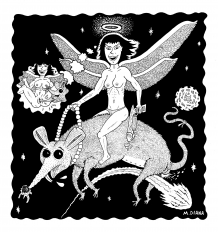




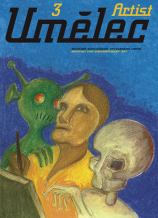
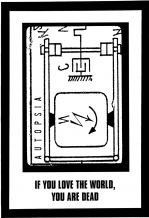
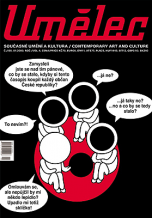
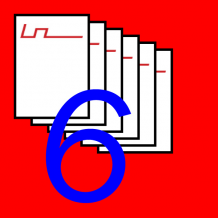


 We Are Rising National Gallery For You! Go to Kyjov by Krásná Lípa no.37.
We Are Rising National Gallery For You! Go to Kyjov by Krásná Lípa no.37.
Комментарии
Статья не была прокомментированаДобавить новый комментарий